Data Annotation vs Data Labeling: What You Need to Know
Artificial intelligence (AI) and machine learning (ML) technologies offer valuable insights, enhancing business efficiency across various industries. Executives view the application of AI algorithms and ML models as a natural step in companies' development and expect engineering teams to prepare subsequent implementation strategies. Nevertheless, it is crucial to understand that machine learning is intricately tied to the training data quality.
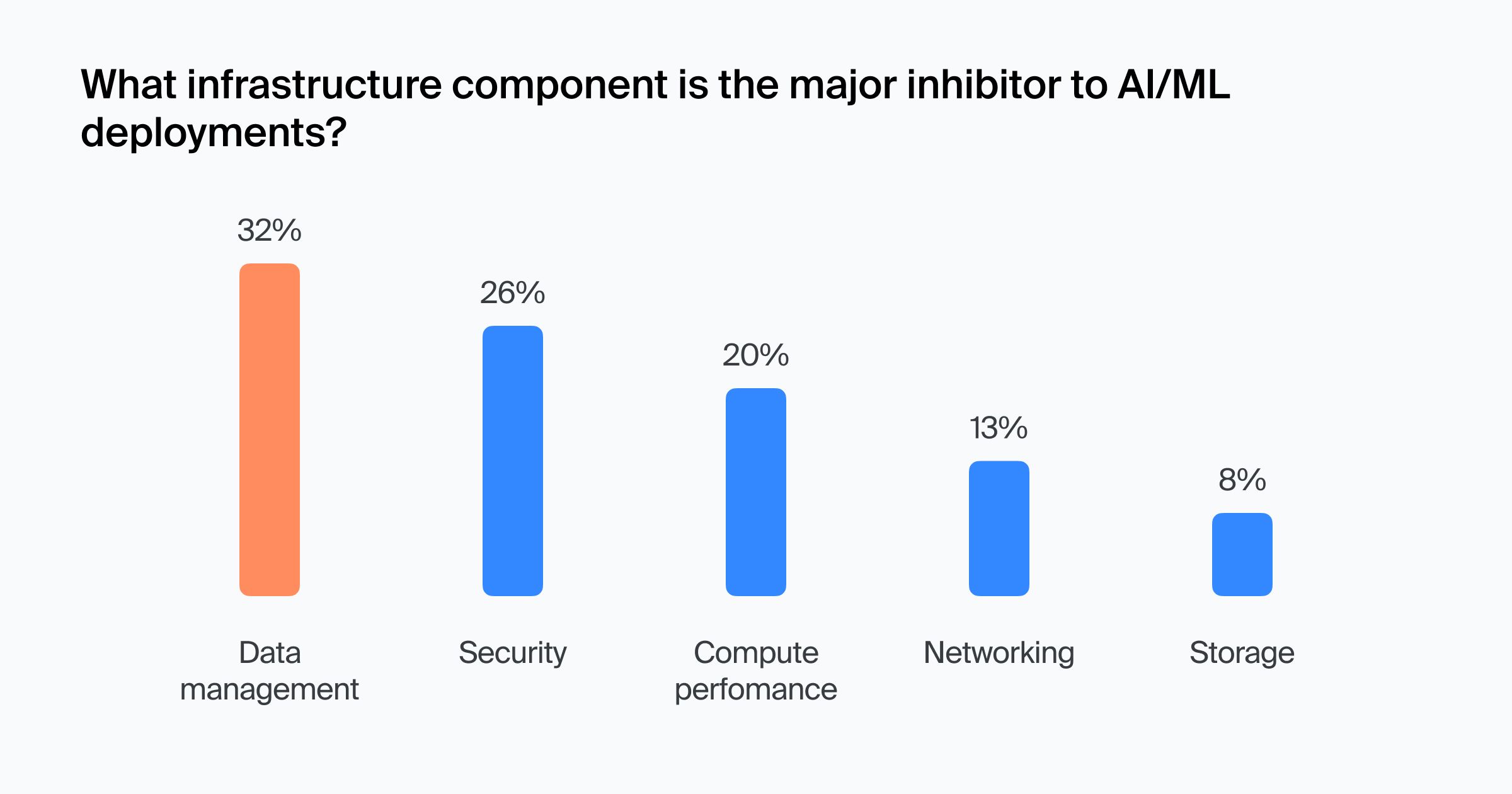
According to the 2023 Global Trends in AI Report by S&P Global, data management is the primary technical problem faced while implementing AI and ML. Source: Weka.io
Algorithms identify problems and make predictions based on a framework derived from the structured datasets on which they were trained. The subsequent extraction of meaningful information for decision-making depends on the initial data annotation process.
The terms 'data annotation' and 'data labeling' are often used interchangeably, as both refer to adding metadata to make raw information pieces understandable for a machine learning model. However, the two pivotal processes bear distinct characteristics, as data annotation covers a broader scope of tasks.
This article aims to clarify the difference between data annotation and labeling, guiding engineers, developers, data scientists, and business specialists in their application nuances.
What is Data Annotation?
Data annotation is the basis for supervised machine learning. It involves transforming raw data — comprising images, copy, video, and audio records — by assigning one or more meaningful tags to data points. Depending on the project's goal, these tags can be supplemented with additional textual or graphic information.
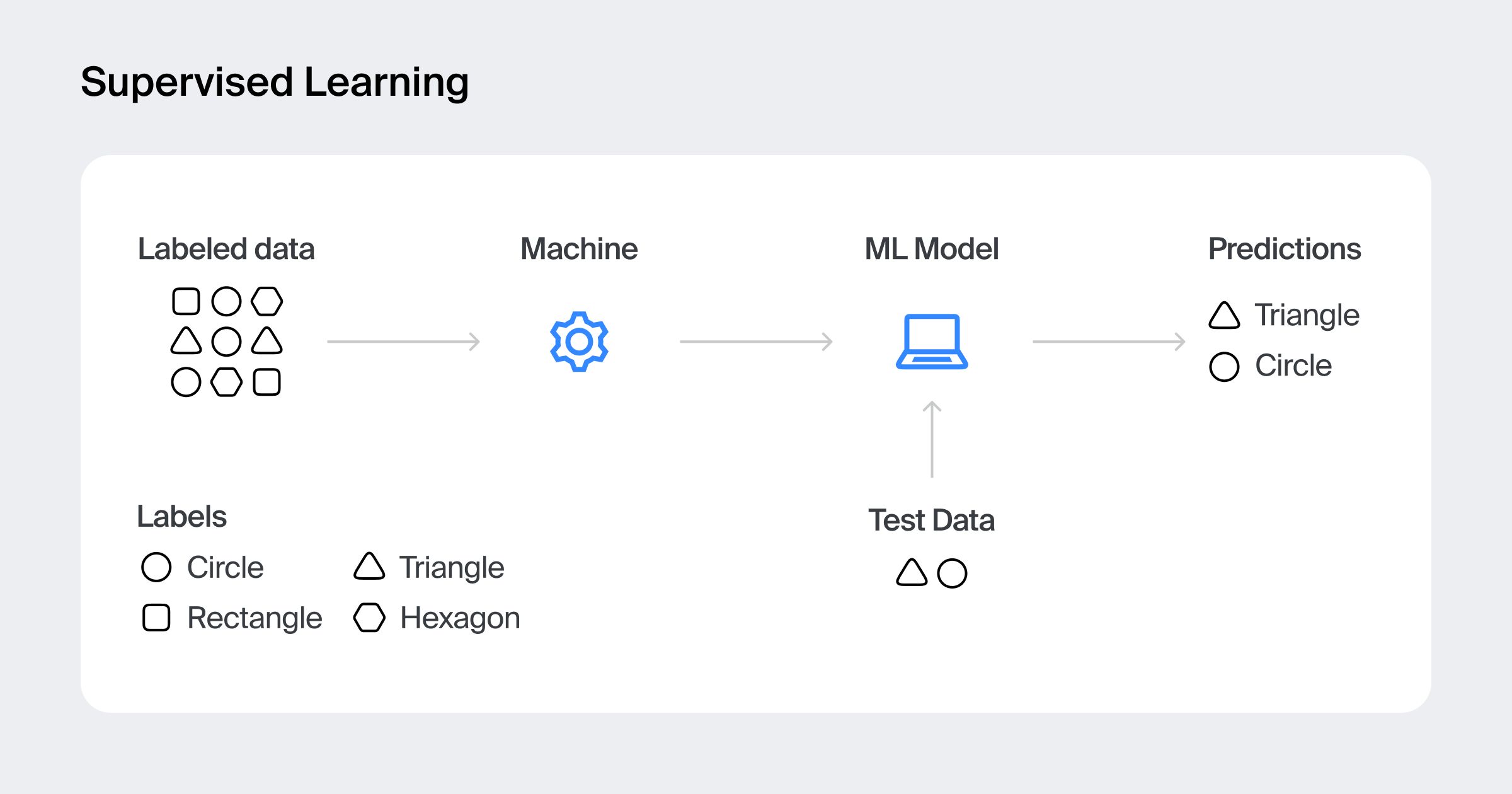
Most ML projects rely on supervised learning, a paradigm in which the model trains by mapping functions from raw input datasets to labeled output data. Source: Enjoy Algorithms
Supervised machine learning algorithms rely on initial human judgments to identify patterns for extracting relevant information from unstructured datasets. Data annotation helps to bring a computer closer to human understanding of relevant cases. A sufficient quantity of adequately annotated training data allows ML-based apps to detect anomalies and threats, identify objects, and classify entities.
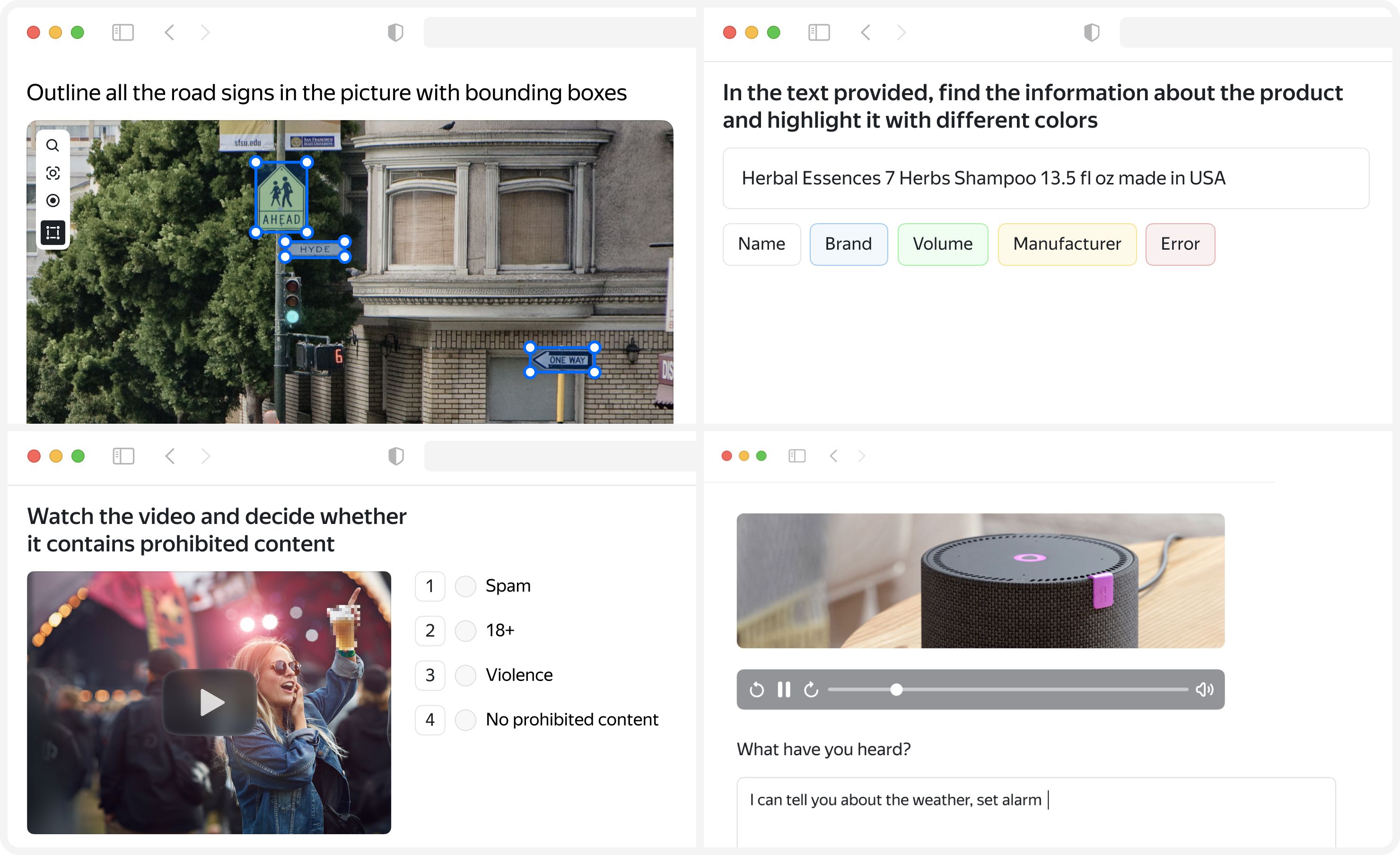
Data annotation tasks include image, text, video, and audio analysis. Source: Toloka
Training data annotation is the process of critical importance for further machine learning models implementation. Poor data quality will question the entire project, and the best practices require special attention to annotated data.
How Does Data Annotation Work?
Annotating data starts with guidelines for human data annotators, who must focus on extracting information relevant to a particular project. Then, a dedicated team analyzes, categorizes, and tags pre-collected data. Data annotation techniques include drawing bounding boxes and polygons marking chosen objects, and providing segmentation masks when needed.
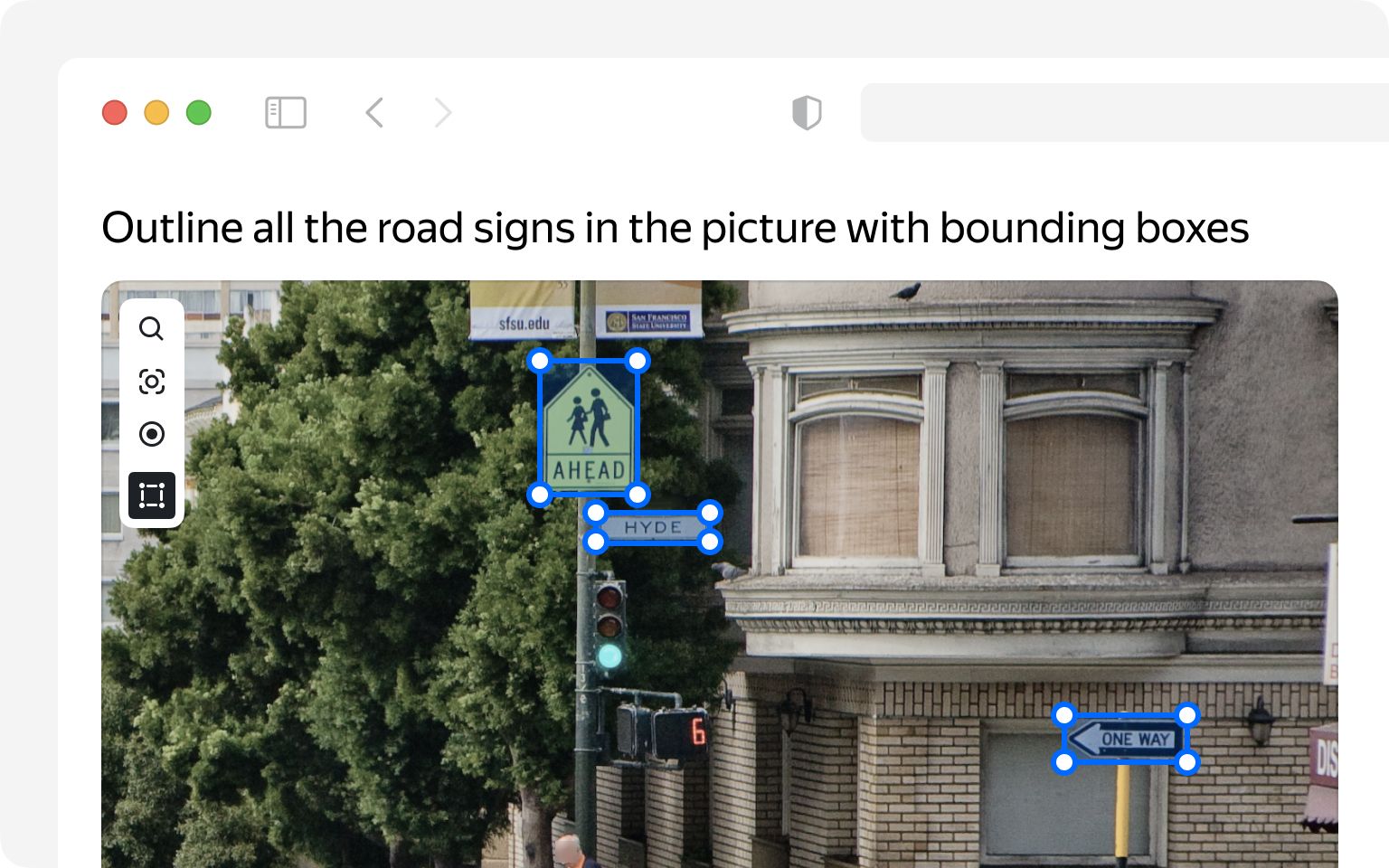
A typical semantic segmentation task presumes outlining object shapes in an image. Source: Toloka
Data annotation is time-consuming, as machine learning algorithms need lots of high-quality training data. However, this is the only way to teach ML models to distinguish important information. Automated object recognition presumes hundreds of hours of manual image segmentation that computer vision apps will later imitate.
In some cases, raw data interpretation may require specific knowledge, then annotators will need a certain domain background or continuous support from industry experts.
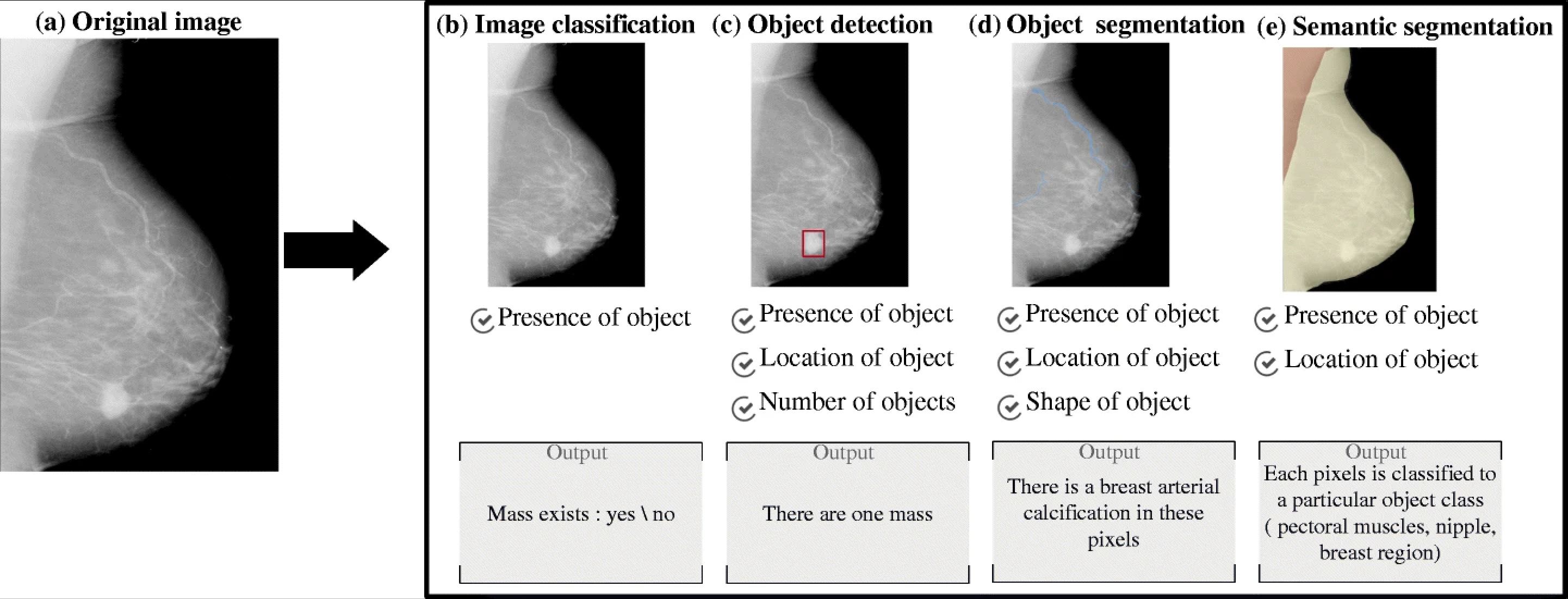
Different medical image annotation types. Source: Multimedia Tools and Applications
Manually annotated training data become the project's objective standard and are referred to as the 'ground truth.' The accuracy of an ML model's predictions is totally dependent on the human-provided annotation and labeling, whether simple labeling or more complex analysis are concerned. That's why data annotation quality control is essential to any ML project and must be considered from the start.
What is Data Labeling?
Data labeling is a type of annotation encompassing straightforward tagging of an unlabeled data piece. It often concerns answering binary questions or assigning the piece to one of the predefined categories. Additional comments and image annotation with bounding boxes go beyond the data labeling frame.
A typical labeling task may involve assessing a set of pictures to define if they contain a traffic light and manually adding a 'yes' or 'no' tag to each. Data labeling comprises tagging suspicious emails as potential spam, demarcating positive and negative comments, marking inappropriate text or visual content, etc.
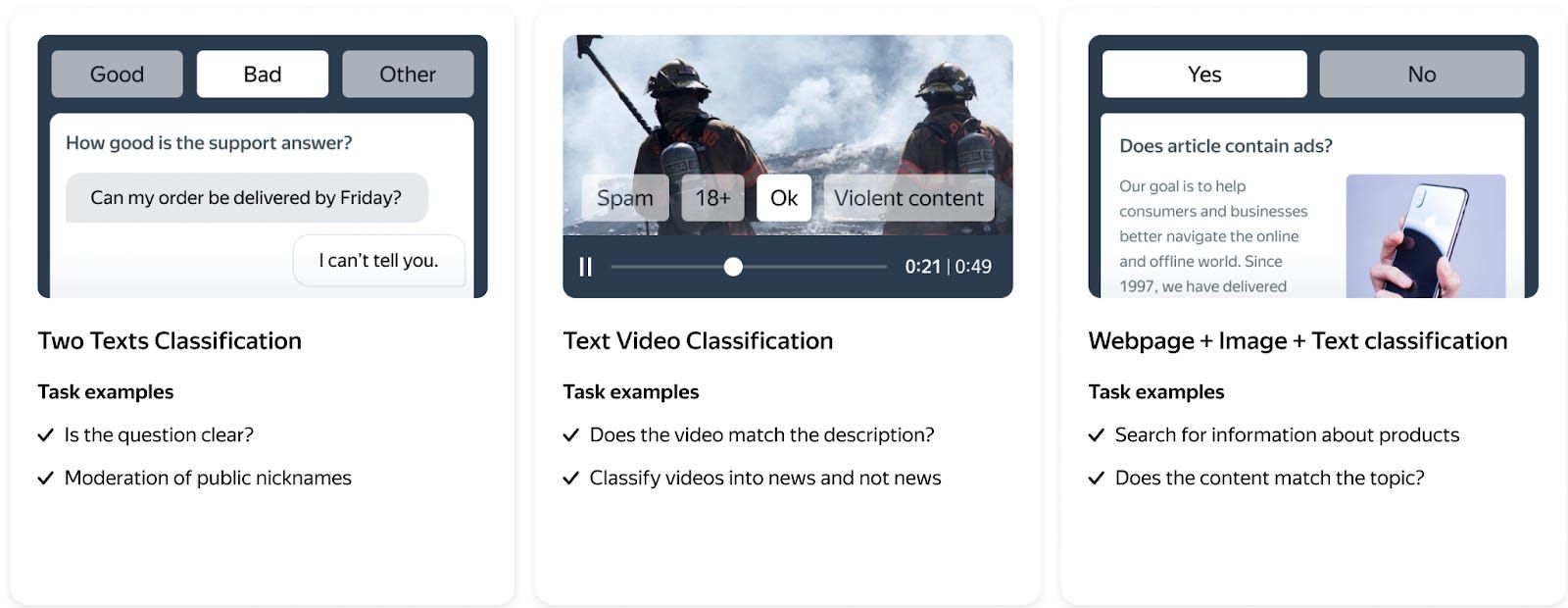
More examples of data labeling tasks from the Toloka platform. Source: TheSequence
Data labeling is faster and more scalable than other types of data annotation. It can be sufficient for many ML projects, but this approach also takes a precise understanding of what kind of information labelers need to extract.
How Does Data Labeling Work?
Data labeling requires a set of meaningful tags relevant to a particular project. Machine learning algorithms can extract only the information outlined in datasets used to train them. So, if you label a certain number of images containing a cat to train an ML model, it can automatically separate pictures with cats from those without them. But it won't be able to locate the cat in the picture.
Accurate data labeling defines the high quality of the overall result of a machine learning model. That's why the process of tagging needs clear guidelines and quality control metrics.
Like other types of data annotation, data labeling can be performed by an internal team or outsourced. Crowdsourcing labeling can be regarded as the most effective practice for most ML-driven projects, considering the volume of data one needs to process for proper model training.
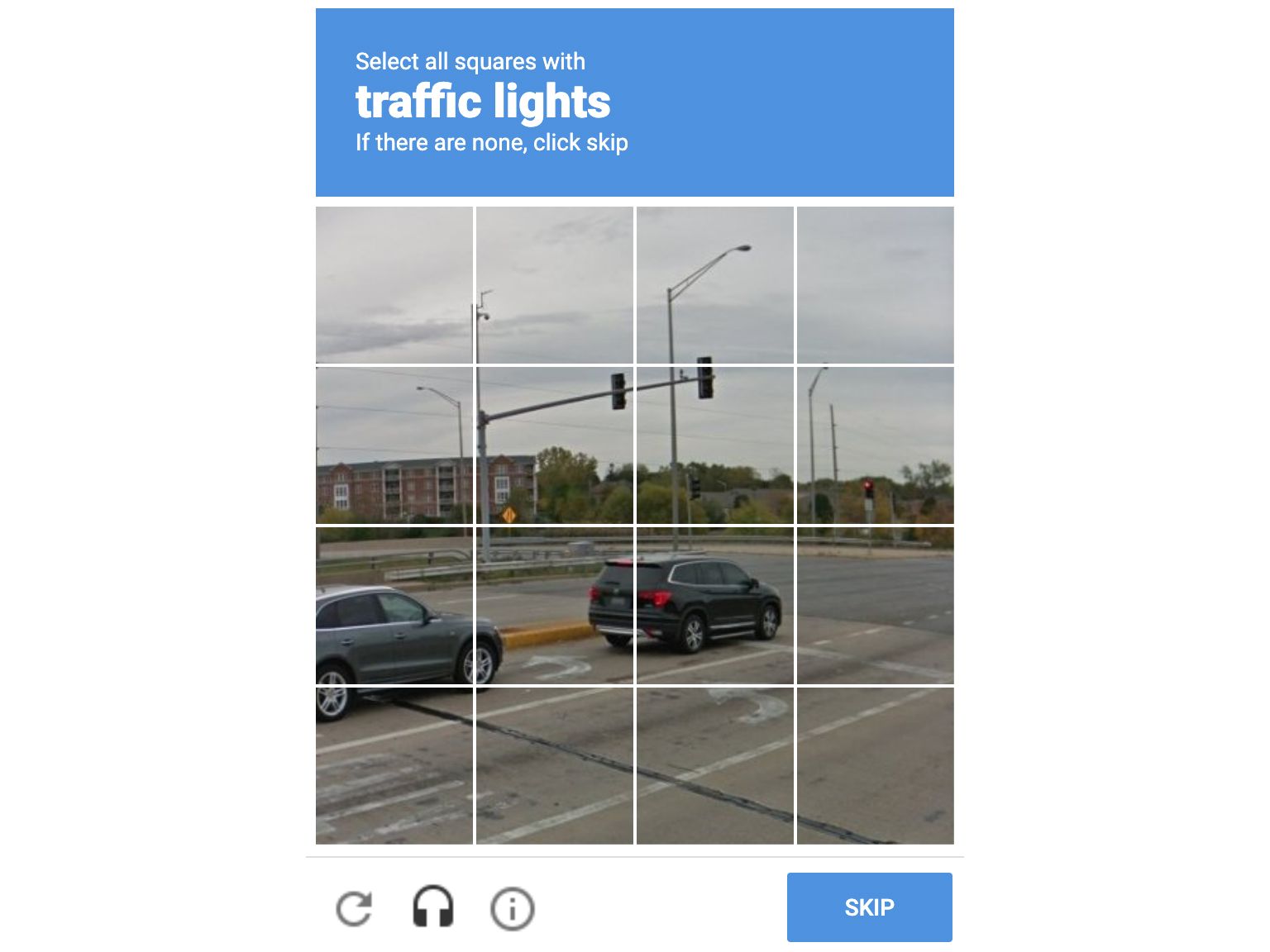
Google used its reCAPTCHA bot protection service to label images for building ML training datasets. Source: Google
Specific automation techniques speed up the process due to predefined rules and algorithms. However, they have limited capabilities, as one still needs human supervision to ensure the data are correctly tagged and fully reliable.
Key Differences Between Data Labeling and Annotation
Both data labeling and annotation aim to enhance data for machine learning, and generally refer to the process of tagging information pieces fed to an ML model. The distinction mainly concerns the formats they deal with. While data labeling focuses on assigning particular predefined labels to each data point, data annotation can comprise detaching more detailed information.
Data labeling is adequate for categorical or binary classification tasks. However, a project will require a broader spectrum of data annotation practices if machine learning algorithms need to learn more about the entities they analyze and their interaction. Bounding boxes and polygons, segmentation masks, and key points give ML models a richer context to understand objects' spatial location, boundaries, or fine-grained features.
Examples illustrating data labeling and data annotation capabilities
Data labeling allows:
to classify images
to recognize emotion
to warn about defects
to recognize an object
Data annotation allows:
to identify objects
to analyze speech
to estimate defects
to track an object
Both data labeling and annotation usually involve human annotators. The human-in-the-loop approach ensures the accuracy of data tagging and the successful fulfillment of more complex tasks. However, data labeling, being less intricate, can be more scalable for large datasets, while data annotations prove indispensable for tasks demanding a nuanced understanding.
Use Cases for Data Labeling and Annotation
Generally, data labeling is used to identify key features present in a dataset, while data annotation helps recognize different relevant data types. Both can serve to train models in a particular domain, although their application may vary. For, in computer vision programs for self-driven vehicles, data labeling will be initially used to identify traffic lights or pedestrians in sight. At the same time, other annotation techniques will be essential to define the distance between different objects.
The choice between labeling and other kinds of annotation depends on the complexity of the task and the level of detail required for successful model training. Some further examples demonstrate when more straightforward data labeling is enough and what tasks and projects require more complicated data pieces annotations.
Computer Vision
Accurately annotated training data is essential for teaching algorithms to recognize and interpret visual information. The quality of data annotation and labeling directly influences the generalization ability of machine learning models, making it a pivotal aspect in the success of computer vision projects.
Data Labeling — Image Classification
Labeling is sufficient for image classification tasks, where the goal is to assign a picture to a predefined category (i.e., studio shot or family photo) or to identify the presence of a particular object (i.e., bicycle or deer). Each image is tagged with the category it belongs to or the object it contains, and the model learns to recognize patterns associated with them.
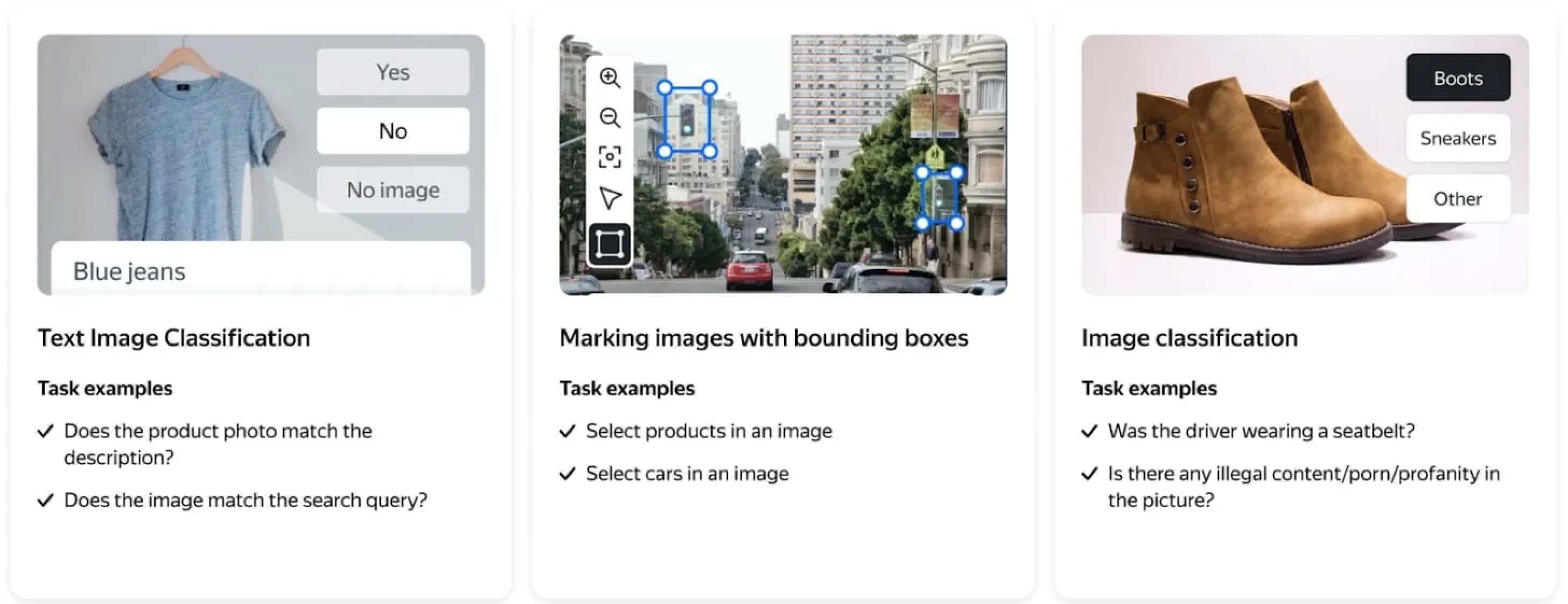
Image data annotation tasks on the Toloka platform encompass both binary images classification and object location. Source: TheSequence
Data Annotation — Object Detection
For computer vision tasks, where the goal is to identify and locate various items within an image, data annotation involves not only labeling but also drawing bounding boxes around these items. Such graphic information is crucial for training models to understand the spatial relationships between objects captured in a picture.
Natural Language Processing
In natural language processing (NLP) projects, data annotation and labeling play a fundamental role by systematically tagging and categorizing text data. These processes enable machine learning models to understand and extract meaningful patterns, relationships, and context from textual information.
Data Labeling — Sentiment Analysis
Data labeling may involve assigning sentiment labels (positive, negative, neutral) to text pieces. The labeled data is then used to train models to recognize and classify the emotion expressed in a given written fragment.
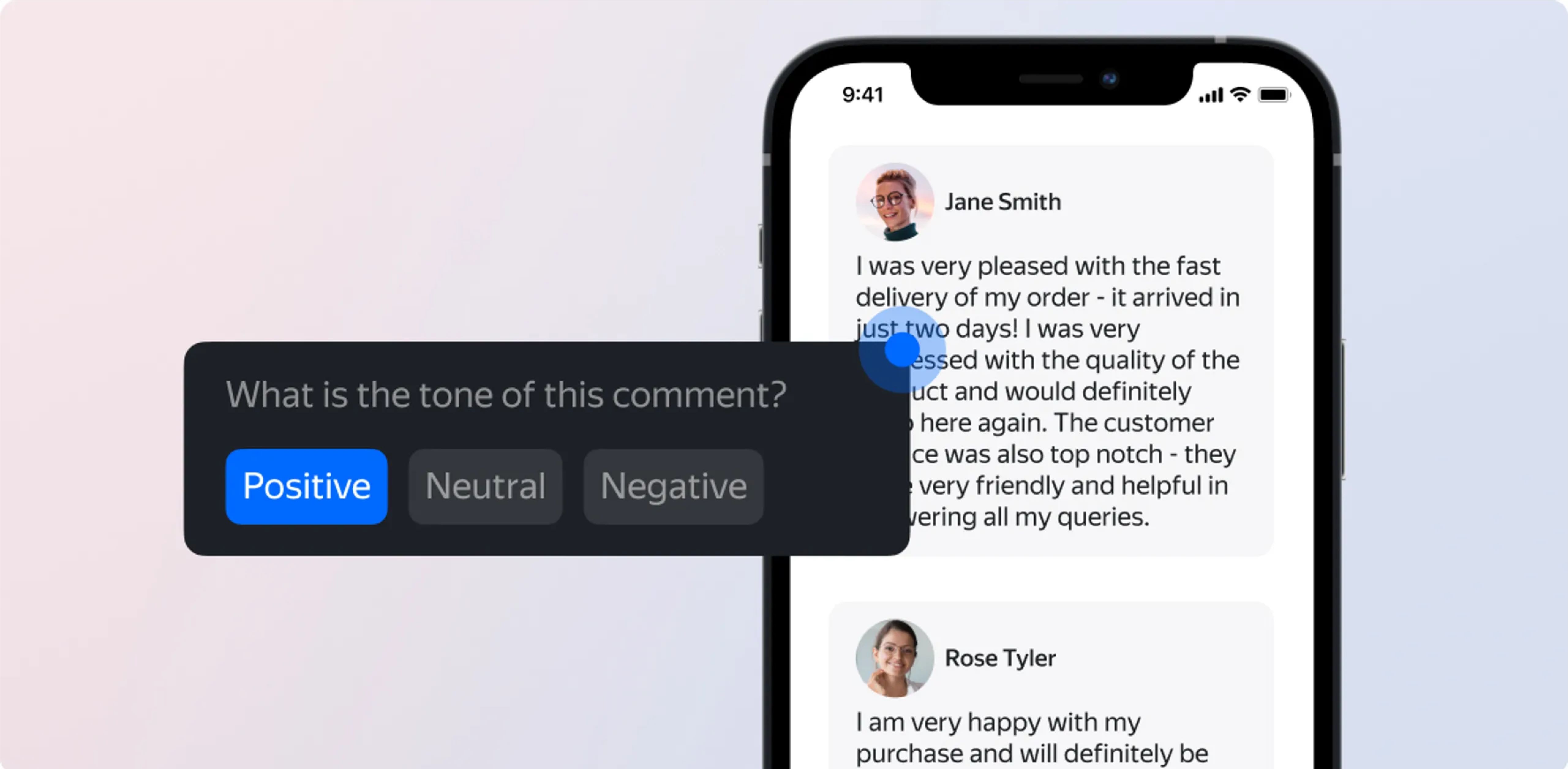
Toloka's adaptive ML models combine automated and manual labeling for social media monitoring. Source: Toloka
Data Annotation — Named Entity Recognition (NER)
Such NLP tasks as named entity recognition may involve identifying and categorizing names of people, organizations, locations, etc., within the text. In this case, structured data will bear the tag marking if it contains an entity name and the additional annotation providing the entity's details for the model.
Speech Recognition
In speech recognition projects, accurate labeling ensures that the model can learn to recognize spoken words. High-quality data annotation is essential for training robust speech recognition models, enhancing their ability to interpret diverse speech patterns and dialects.
Data Labeling — Speech-to-Text
In transcription tasks, the labeled data consists of audio samples with corresponding text copy. That works for an ML model to train to convert spoken language into written form.

Labeled audio can serve for emotion recognition training to prepare ML models for customer feedback analysis
Data Annotation — Phoneme Annotation
In phonetic research or any kind of advanced speech processing, data annotation involves additional labeling of specific phonemes within the audio data. This finer level of annotation can help train models to distinguish between individual phonetic elements.
Autonomous Vehicles
In autonomous vehicle projects, data annotation can involve interpreting large amounts of sensor data, such as images, lidar scans, and radar signals. Accurate labeling is essential for training machine learning models to identify and respond to various objects and scenarios on the road, ensuring the safety and reliability of the AI algorithms.
Data Labeling — Lane Detection
Data labeling for lane detection involves tagging all images or sensor data identifying lanes on the road. Using such datasets, the model learns to recognize lines marking the lanes a vehicle must follow.
Data Annotation — Semantic Segmentation
If the model needs a more granular understanding of the scene in the picture, the task may involve labeling each pixel in an input image with a corresponding class. Detailed image annotation enables the ML app to analyze the situation and plan safer actions in a dynamic environment.
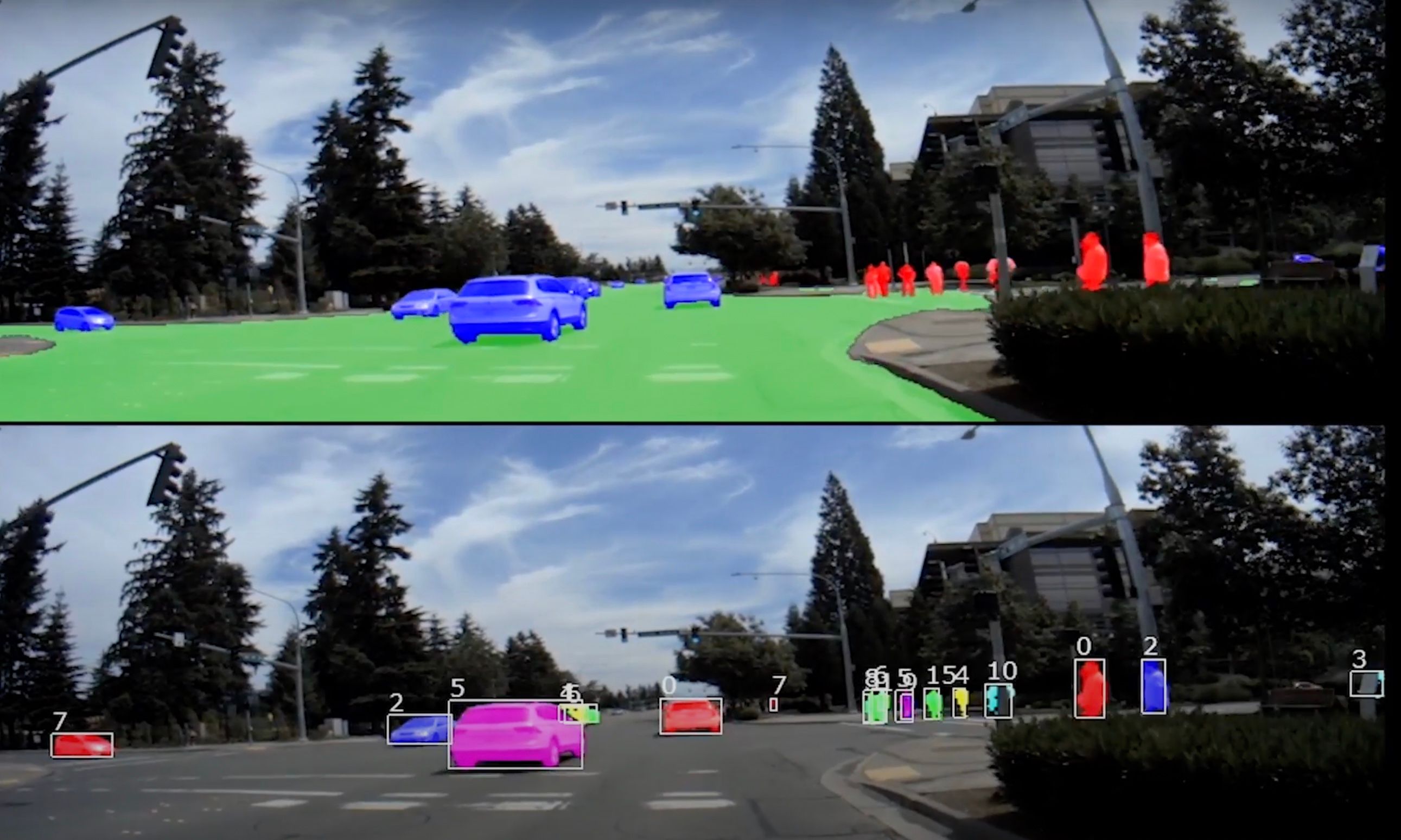
A self-driving car's view of the world with bounding boxes around objects is based on manually annotated images. Source: NVIDIA Drive
Medical Imaging
Expert image annotation is critical for training machine learning algorithms for automated medical data analysis. Relevant alerts derived from raw datasets can assist healthcare professionals in more precise and timely diagnosis.
Data Labeling — Risk Identification
Data labeling might involve classifying images, such as X-rays, MRI scans, and CT scans, into normal and abnormal categories. The model learns to identify patterns associated with potential diseases to alarm the unusual state of organs.
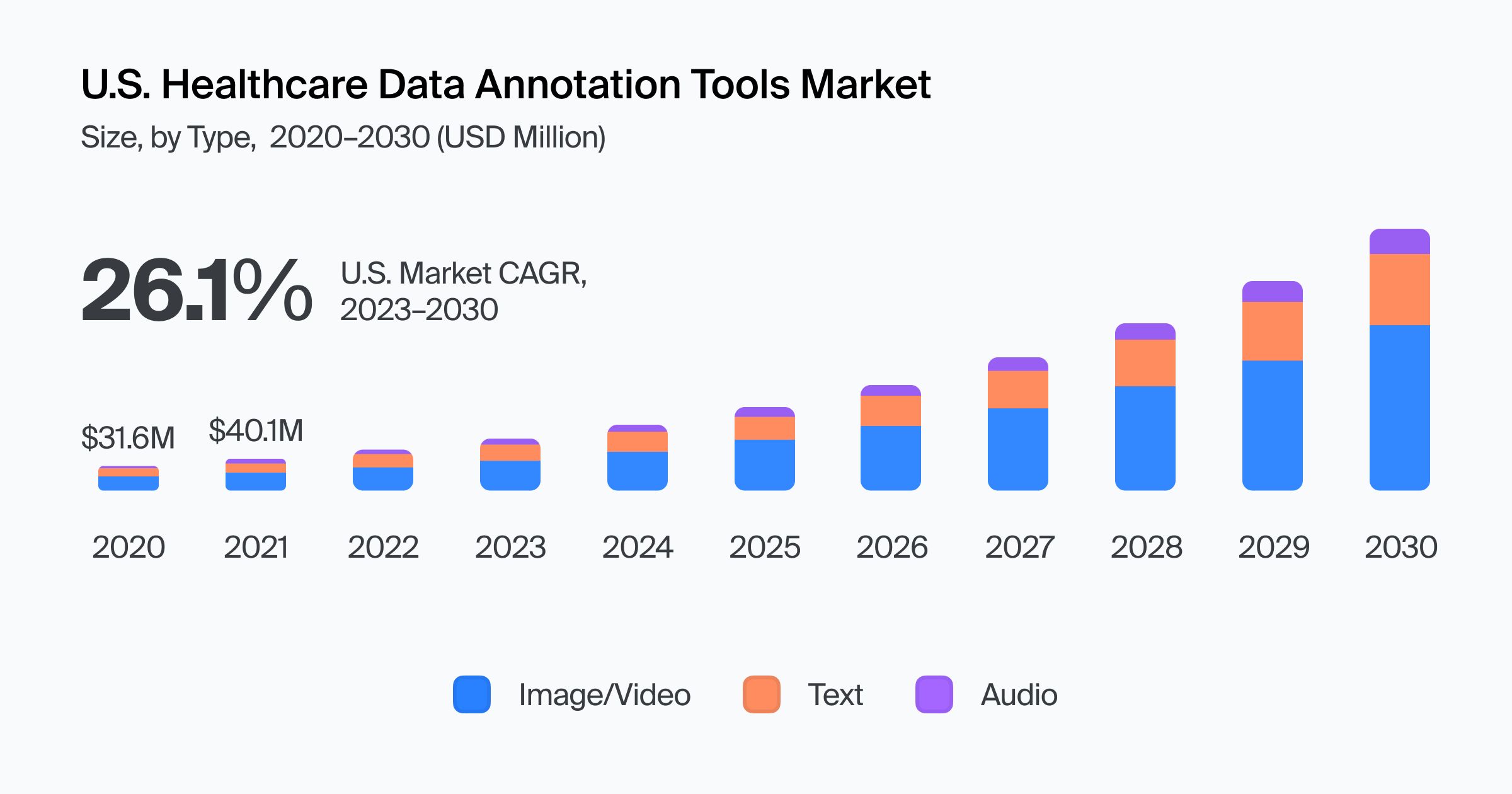
The global healthcare data annotation tools market size was estimated at $ 129.9 million in 2022. Source: Grand View Research
Data Annotation — Tumor Segmentation
For more advanced tasks like tumor segmentation, data annotation includes bounding boxes or segmentation masks. This detailed information helps train the model to analyze the extent of medical conditions.
Industrial Manufacturing
Accurate data annotation from sensors and cameras helps train models to identify defects and monitor equipment performance. Well-labeled datasets enable machine learning algorithms to analyze and interpret complex manufacturing data, facilitating predictive maintenance, quality control, and overall process optimization in industrial settings.
Data Labeling — Defect Detection
If the goal is to separate all defective products, labeling images as either 'defective' or 'non-defective' may be sufficient. The model learns to recognize possible problems and identify items that need further inspection from the quality assurance team.
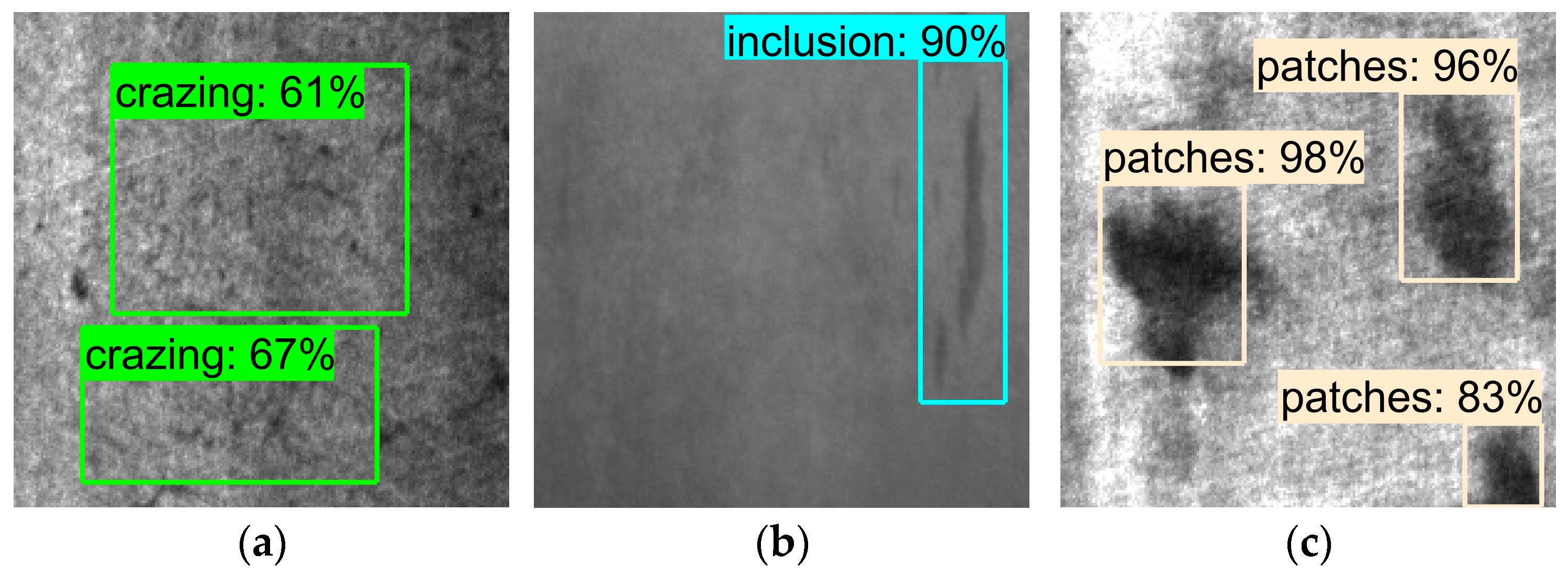
Defect data annotation presumes fine-tuned guidelines for a particular project. Source: Surface Defect Detection of Steel Strip with Double Pyramid Network
Data Annotation — Defect Localization
Data annotation tasks in manufacturing may involve drawing bounding boxes or segmentation masks around defects, providing more detailed information for quality control.
Retail
In retail, machine learning algorithms help understand consumer behavior, optimize inventory management, and enhance the overall shopping experience. Accurate annotation of images and text data enables ML models to recognize products, categorize items, and personalize customer recommendations.
Data Labeling — Product Categorization
Data labeling is commonly used to classify products by categories (e.g., electronics, clothing, furniture). The ML model learns to assign new items to a particular directory based on these labels.
Data Annotation — Object Localization
Additional data annotation is required if the goal is to recognize individual products within images or video streams. This involves annotating bounding boxes around each product to provide spatial information for inventory management or shelf monitoring applications.
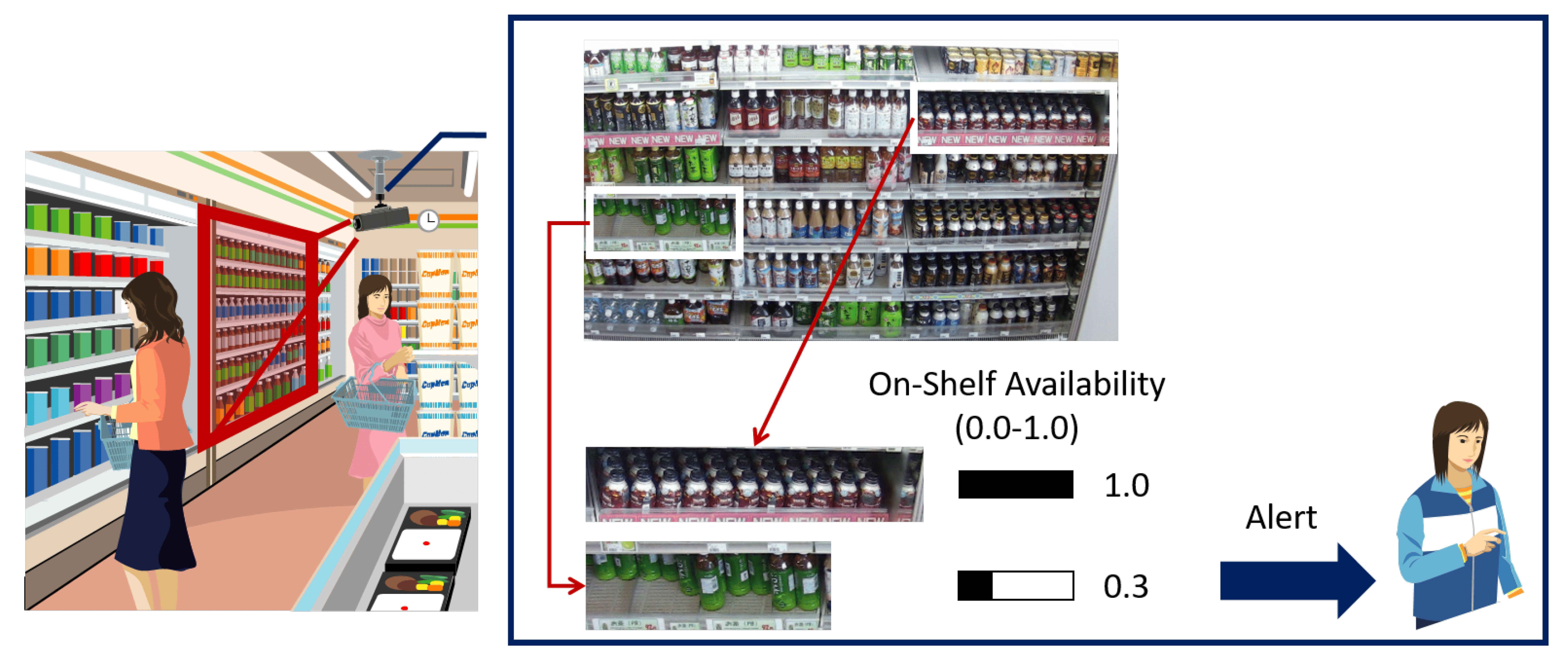
Supervised ML can assist in reaching high on-shelf availability. Source: Sensors via MDPI
Finance
Data annotation and labeling are critical for training models to analyze vast amounts of financial data, detect patterns, and make informed predictions. Accurate labeling of financial transactions and market data is essential for developing risk management models, fraud detection systems, and algorithmic trading strategies.
Data Labeling — Fraud Detection
Data labeling can be effective for further fraud detection automation. Training data may include transactions tagged as 'fraudulent' or 'non-fraudulent.' The model learns to identify patterns indicative of fraudulent activities and warn about similar cases in the future.
Data Annotation — Anomaly Detection
For more advanced tasks, such as anomaly detection, additional data annotation might involve labeling specific features or patterns within the transaction data that are considered anomalous. This finer annotation helps the model detect subtle deviations from normal behavior.
Conclusion
Data labeling is one of the data annotation types, and understanding its benefits and limitations is imperative for professionals involved in ML/AI projects. The choice between practices depends on the specific requirements ranging from scalability concerns to the need for detailed spatial information. By grasping these distinctions, engineers, data scientists, and business specialists can optimize their ML/AI endeavors.
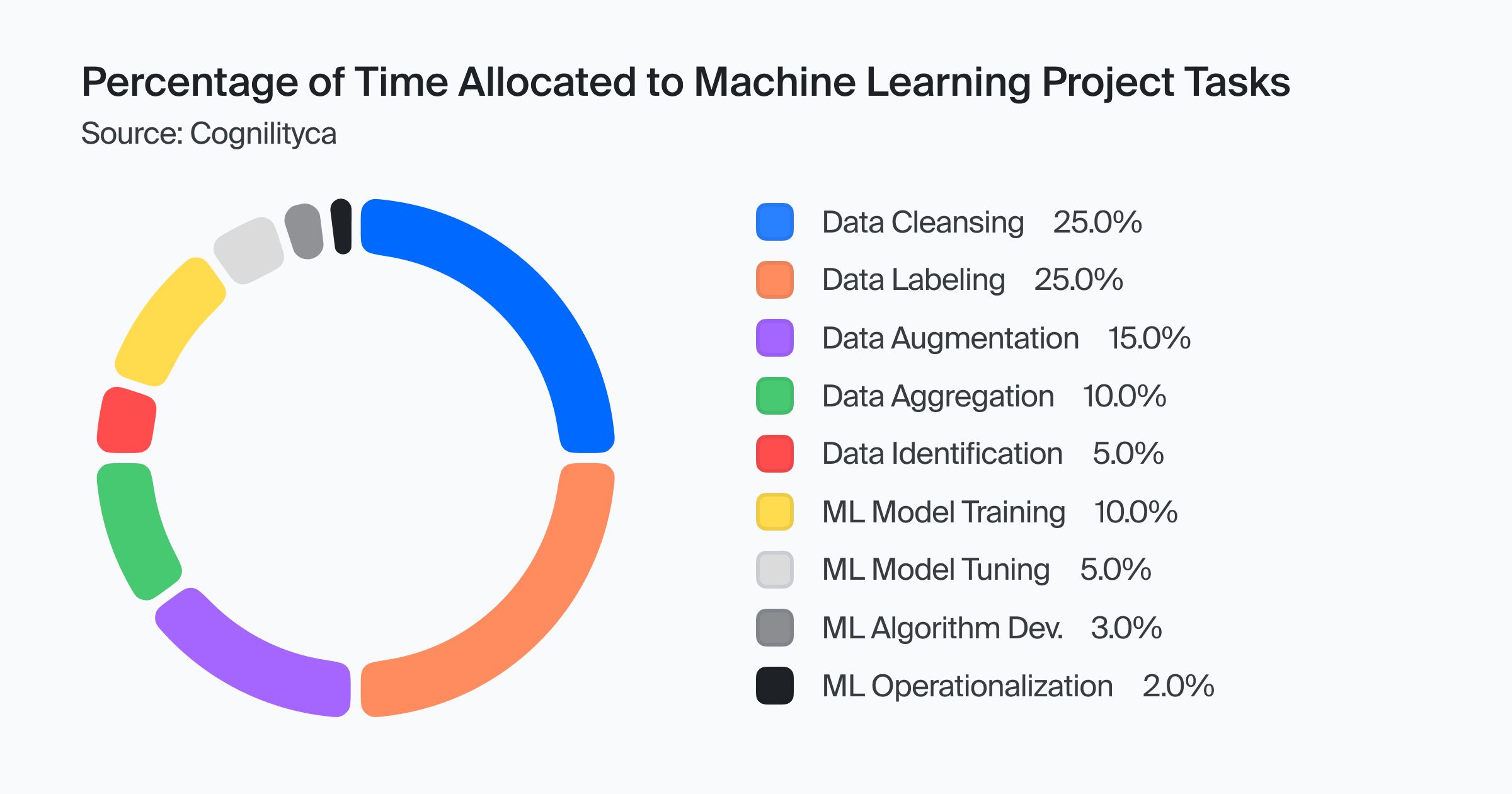
Data preparation consumes over 80% of an ML project time. Source: Sensors via MDPI
Crowdsourcing platforms assist in choosing the sufficient format for data annotation, managing the process, and taking responsibility for its quality control. As data collection, labeling, and augmentation take most of any ML project's time, outsourcing this part of the job seems rational to consider.






